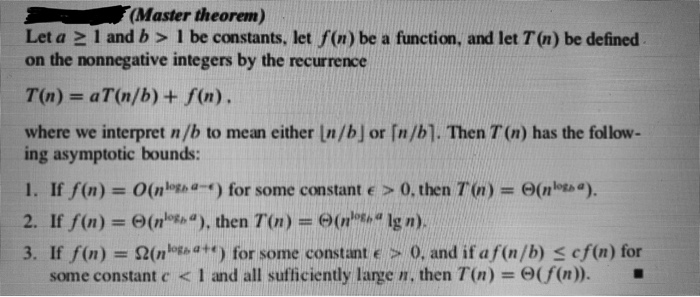Answered step by step
Verified Expert Solution
Question
1 Approved Answer
Solve ALL OF the following recurrences and provide explanations. Hint: Generously apply the master theorem. Give asymptotic upper and lower bounds for T(n) in each
Solve ALL OF the following recurrences and provide explanations. Hint: Generously apply the master theorem.
Give asymptotic upper and lower bounds for T(n) in each of the following recurrences. Assume that T(n) is constant for n 2. Make your bounds as tight as possible, and justify your answers.
a. T(n) = 2T(n/2) + n3
b. T(n) = T(9n/10) + n
c. T(n) = 16T(n/4) + n2
d. T (n) = 7T(n/3) + n2
e. T(n) = 7T(n/2) + n2
f. T(n) = 2T(n/4) + n1/2
g. T(n) =T(n-1) + n
h. T(n) = T(n1/2) + 1

Step by Step Solution
There are 3 Steps involved in it
Step: 1

Get Instant Access to Expert-Tailored Solutions
See step-by-step solutions with expert insights and AI powered tools for academic success
Step: 2

Step: 3

Ace Your Homework with AI
Get the answers you need in no time with our AI-driven, step-by-step assistance
Get Started


